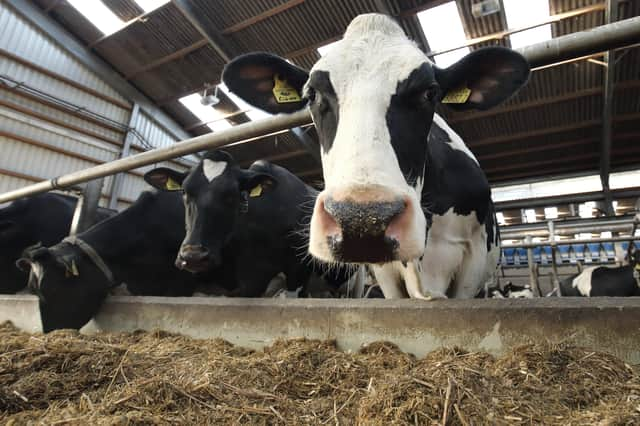Milk pricing in Northern Ireland – Is change coming at long last?


Subsequently, the UFU sought to generate and progress debate on how milk is priced in NI (including a lengthy consultation response on milk contracts), writing press articles, having discussions with the UFU dairy committee, providing presentations at public events and we have approached AFBI on generating analysis as to what constituent pricing would mean for NI dairying.
Progress has been painstakingly slow, with no progress up until the middle of this year when Glanbia Ireland announced higher increments for butter fat and protein over the next four years. Now, a dairy grouping ‘solid change’ have convened a meeting on 15 November in the Dunsilly Hotel in Antrim, seeking a change in the current pricing model to reward the production of milk solids.
Advertisement
Advertisement
This new-found momentum is timely considering that the dairy policy landscape has changed considerably since the debate first started.
Rising input costs - No one will need reminding that there has been a dramatic increase to on-farm dairy production costs, so despite improved base milk prices, farmers are facing unprecedented pressure on their finances. A milk pricing system which encourages for example, higher butter fat and protein would create more accurate control of unit costs of milk/kg of final product, meaning that dairy farmers would be able to manage cash flow more accurately.
Climate change – A higher compositional quality of milk provides the potential to produce more tonnes of dairy products from current processing capacity. It brings into question the continued signal from processors to their producers to produce milk the way they are, namely the production of water which is then transported and subsequently processed.
Milk pricing is the most important signalling mechanism available to dairy farmers, yet the price paid for milk does not reflect the amount and value of products that can be made from it. The way milk is priced in NI has not changed in nearly 30 years. For example, NI dairy farmers are currently paid retrospectively for their product. Many do not know the price they are going to receive for the milk they produce until three weeks from the end of the month. This does not send an accurate, reflective nor fair signal to the end producer, meaning the NI dairy farmer is a price-taker.
Advertisement
Advertisement
In response to the gathering inflationary cost pressure in dairying, Kite Consulting this week have published a report setting out the need of the ‘re-basing of ‘normal’ UK retail prices for milk, cheese and butter’. Yet there is no guarantee that higher prices will be passed back to the primary producer in the form of a meaningful farmgate milk price due to how milk is priced in NI.
This is exactly why change is needed and with a milk purchasing code, change is coming.
The code aims to improve the position of the dairy farmer in the supply chain and lessen the risk they are exposed to. The question has to be asked as to why dairy farmers continue to be exposed to such chronic risk levels. For example, the soaring input prices we have seen in the second half of this year, yet they are not being paid a reflective price for the milk they are producing.
A code which aims to minimise this exposure and improve their position in the supply chain should be considered and in turn, could be a first step to a more reflective way milk is priced in NI, because let’s face it, change is long overdue and such is the shift in the dairy policy landscape. It is needed now more than ever before.